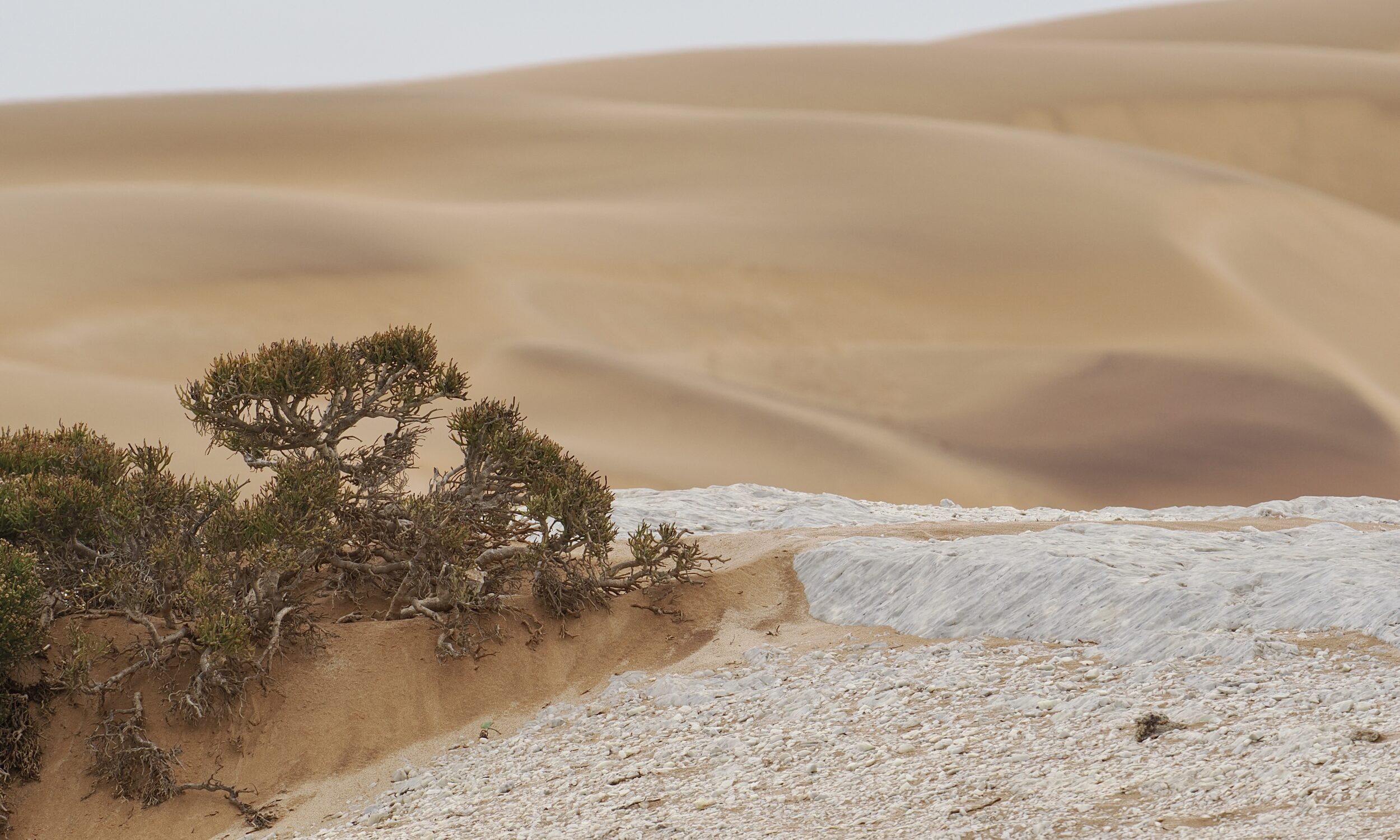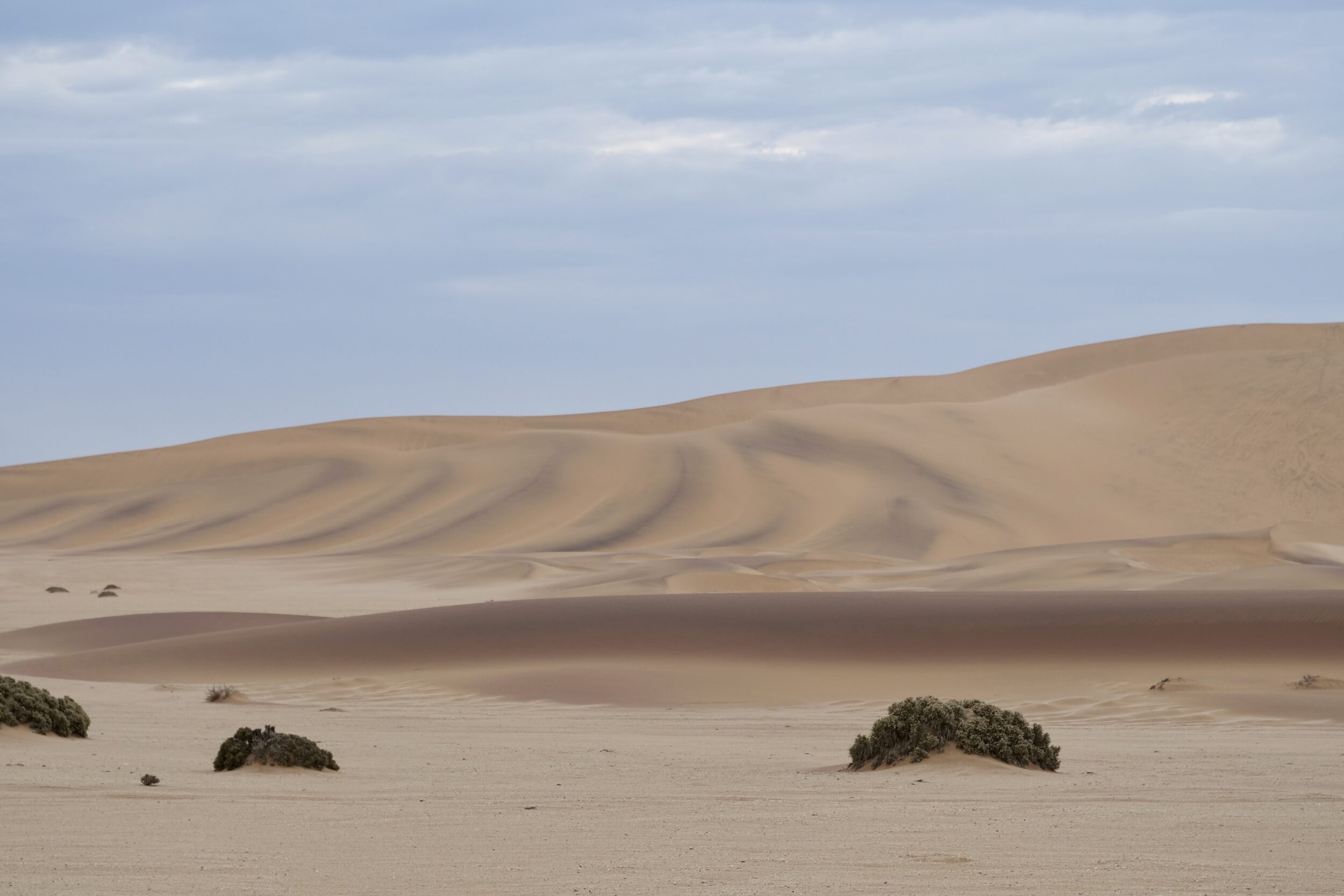The multi-hued appearance of these dunes – just a few kilometres inland from the Atlantic Ocean – shows that their composition is diverse, not overwhelmingly silica-dominant.
Silica does not rust; iron does.
Rust is clearly evident in some of the pictured sands, albeit less spectacularly so than in much of Australia’s “Red Centre”…and in the Namib too, further inland.
Most of the sands in the Namib Desert’s dunes are not of “local” origin.
They were first transported by the Orange River, which flows for more than 2,000 kilometres; its mouth is circa 700 kilometres south of this post’s vantage point. (it is enormously further-distant than that, by road)
Wild Atlantic waters and oft-powerful winds have both played a crucial role in transporting sands far north of Oranjemund.
Once sandgrains have “landed” on any Namibian beach, wind becomes overwhelmingly the major creator/shaper of the Namib’s dunes.
Given time-enough, wind can “sort” sands, according to their various grain-sizes and densities; a more geologically astute person than yours-truly could probably “read” the colour variations evident in this post’s photos.
And a more botanically literate individual could probably identify the plant, below!
It is definitely not another dollar bush. (I am almost sure that the green-leafed plants in the featured image, above, are dollar bushes)

I’ll keep my promise that the Namib will not be permitted to dominate the present series.
Around Sossusvlei – 400 ks by road, from Swakopmund – is where the most spectacular dunes soar.
(as a very hardy bird would fly, it’d be more like 250 ks, mostly south. Sossusvlei is also circa 60 ks further inland, as the Atlantic sea-mists blow)
A future series will explore the Sossusvlei area.
By way of a “tease”, the current series’ next, single-image chapter will feature a Sossusvei dune, plus an emblematic local animal..
